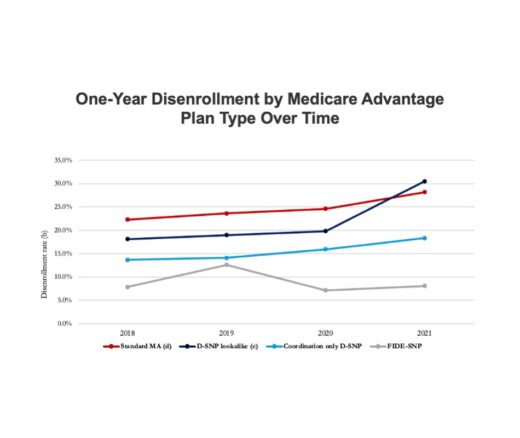
Parents Need Time, Not Deadlines, After Fetal Diagnoses
Abortion Restrictions Can Backfire, Pushing Families to End Pregnancies
Blog Post

Trauma surgeons Elinore Kaufman and Diane Haddad noticed that some of their patients at the Hospital of the University of Pennsylvania were waiting a long time to be discharged. These individuals with traumatic injuries—many with stabbing or gunshot wounds—weren’t staying in the hospital longer due to medical needs, but because of administrative hurdles: They had enrolled in insurance at the hospital through a special Medicaid program meant to get them covered quickly. But coverage delays were occurring anyway, serving to postpone the inpatient rehabilitative care these patients needed after hospitalization.
Kaufman, an LDI Senior Fellow, Haddad, a former LDI Associate Fellow, and colleagues decided to look more closely at the issue. In a study published in the Journal of Trauma and Acute Care Surgery, they found that patients who enrolled in Medicaid during hospitalization and needed ongoing rehabilitative care after discharge spent more time in the hospital and had higher costs. On average, patients who used emergency enrollment stayed nearly four days longer, and their costs were more than $10,000 higher than those who were already insured on admission. This increased cost was entirely due to the difference in hospital length of stay, the researchers found.
The patients in their study all had traumatic injuries, which came from car crashes, falls, gunshot or stab wounds, and other accidents or acts of violence. Some of these patients need ongoing care at inpatient rehabilitation centers after their hospital stays due to the severity of their injuries, but that specialized care is generally not available without insurance.
These coverage delays “should potentially prompt health systems to advocate for policies that get people adequate care in a timely and efficient fashion,” Kaufman said. “That’s good for both the patient and for the health system’s finances.”
These differences were identified even though Penn has rehabilitation services under the same health system. It also uses a financial counseling team to qualify patients for Medicaid through its emergency enrollment program. The program, known as hospital presumptive eligibility (HPE), is supposed to reduce barriers to Medicaid enrollment but the LDI study suggests that those hurdles should be lowered even further to improve patient care and reduce costs.
“It raises the question, ‘Why is there not a better safety net?’” said Haddad, a former Penn Clinical Fellow who is currently an Assistant Professor of Surgery at the University of Chicago. “And if Medicaid is supposed to be that safety net, can we make it easier for patients to get that without burdening the entire system?”
Although the researchers primarily compared people with traumatic injuries who were insured or uninsured at admission, there were other differences between the groups. Those who were already insured tended to be older and more likely to have other health complications, while those who were enrolled through HPE were more likely to have a gunshot or stab wound. Their study also focused solely on patients at the Hospital of the University of Pennsylvania, an academic medical center. To Kaufman’s knowledge, nobody has looked at this problem at other hospitals.
HPE was expanded by the Affordable Care Act in 2014. The program allows patients who are eligible for Medicaid to enroll with fewer administrative hurdles and ensures that their hospital care will be retroactively covered.
Many individuals with a traumatic injury are eligible for HPE. They are twice as likely as the general population to be uninsured, and are more often from disadvantaged socioeconomic or racial and ethnic groups.
Patients who need inpatient rehabilitation can’t be discharged home while they wait for enrollment because their injuries require round-the-clock care. At the same time, there’s no medical need for them to remain in the hospital.
Kaufman pointed out that reducing unnecessary hospital stays is in everyone’s best interest. Hospital beds are nearly always in short supply. And health systems are often reimbursed through bundled payments based on diagnoses, rather than lengths of stay, so those longer stays can end up costing the hospital more in unreimbursed costs. For some patients, delaying access to physical therapy provided at rehabilitation centers could set back their recoveries.
To solve this problem, Kaufman proposed a two-part approach: Medicaid enrollment through HPE—already simpler than standard enrollment—should be streamlined even more. And health systems and insurers could agree to allow patients to be discharged to rehabilitative care while their enrollment was still underway, if it was likely the patient would qualify for Medicaid.
Although the Trump administration is considering cuts to Medicaid, it’s unclear where and how those cuts might occur. If the Affordable Care Act is curtailed or reformed, it’s possible HPE would no longer exist, Kaufman said, and other changes to Medicaid funding or eligibility would also affect this group of patients.
“People with traumatic injuries are going to continue to be admitted to hospitals,” Kaufman said. “Any pulling back of the financial support to Medicaid would obviously hurt these populations and the health systems that take care of them.”
The study, “Awaiting Insurance Coverage: Medicaid Enrollment and Post-Acute Care Use After Traumatic Injury,” was published on January 30, 2025, in the Journal of Trauma and Acute Care Surgery. Authors include Diane N. Haddad, Justin S. Hatchimonji, Ella C. Eisinger, Angela T. Chen, Kristen M. Chreiman, Omar I. Ramadan, Anna U. Morgan, M. Kit Delgado, Niels D. Martin, Mark J. Seamon, Lisa M. Knowlton, and Elinore J. Kaufman.


Abortion Restrictions Can Backfire, Pushing Families to End Pregnancies

They Reduce Coverage, Not Costs, History Shows. Smarter Incentives Would Encourage the Private Sector
Research Brief: Less Than 1% of Clinical Practices Provide 80% of Outpatient Services for Dually Eligible Individuals

New Findings Highlight the Value of 12-Month Eligibility in Reducing Care Gaps and Paperwork Burdens

Chart of the Day: Fully Integrated D-SNPs Kept These Vulnerable Patients Enrolled, a New Study Finds

Democrats Must Go Beyond Reversing Trump-Era Cuts With a New Strategy to Streamline Coverage, Reduce Waste, and Expand Access to Medicaid